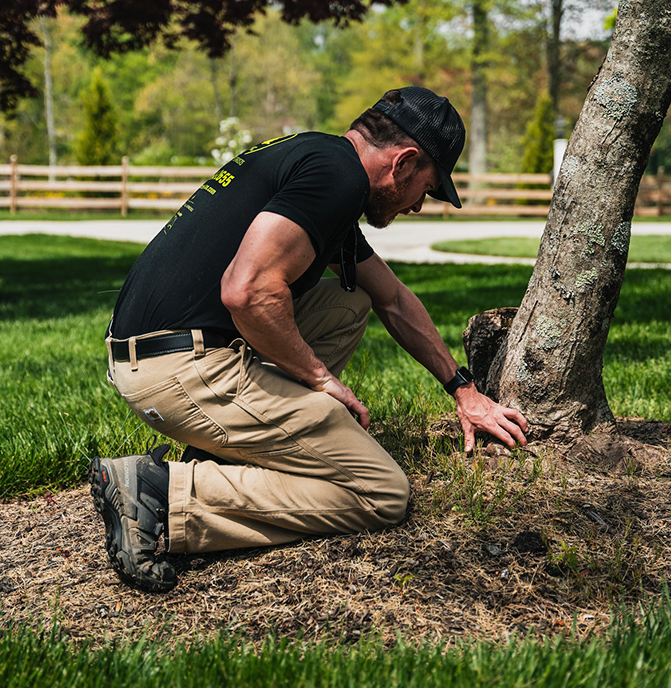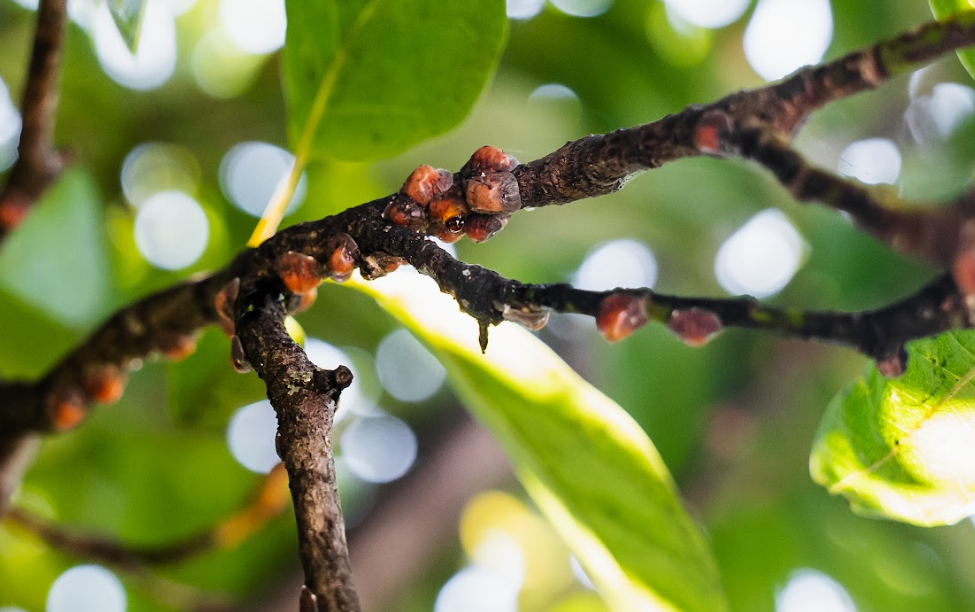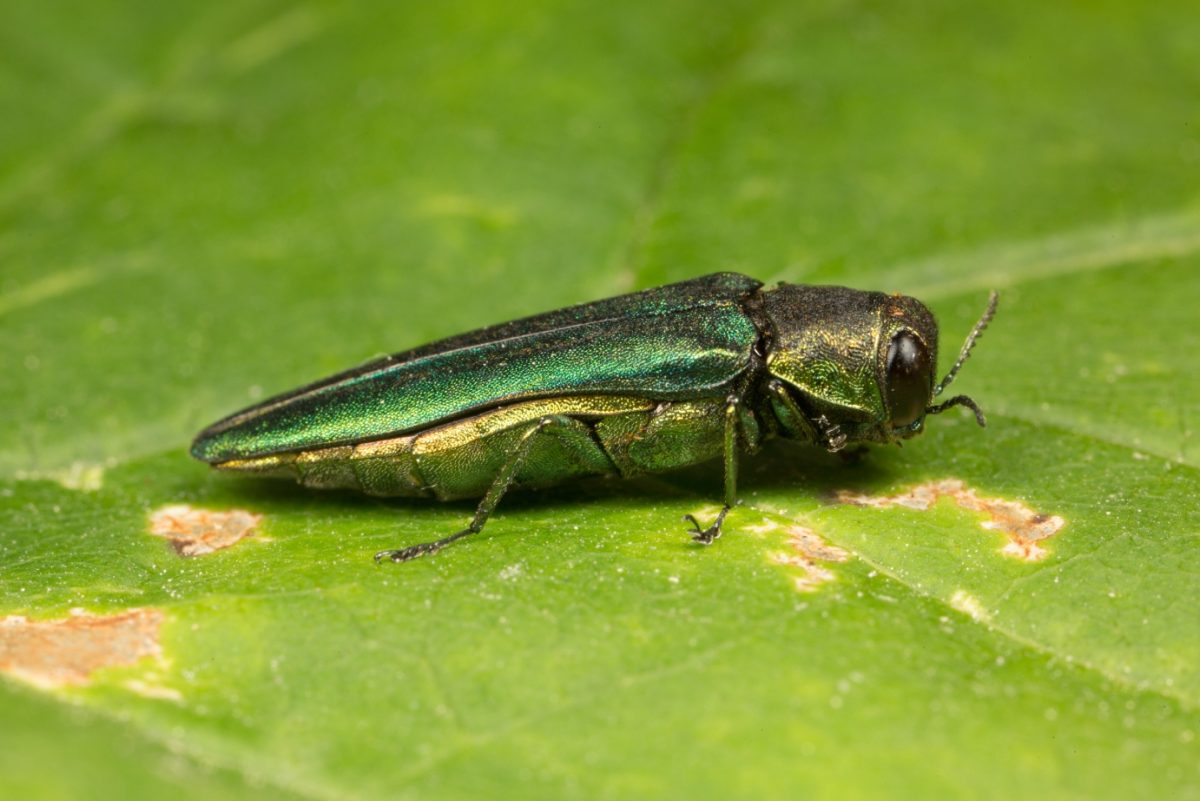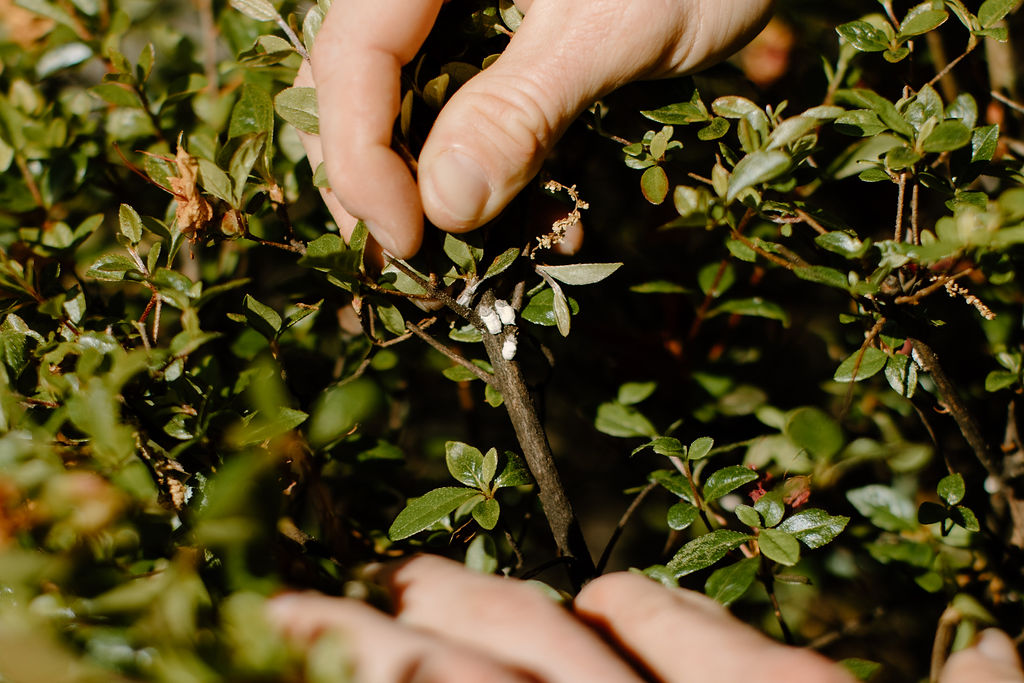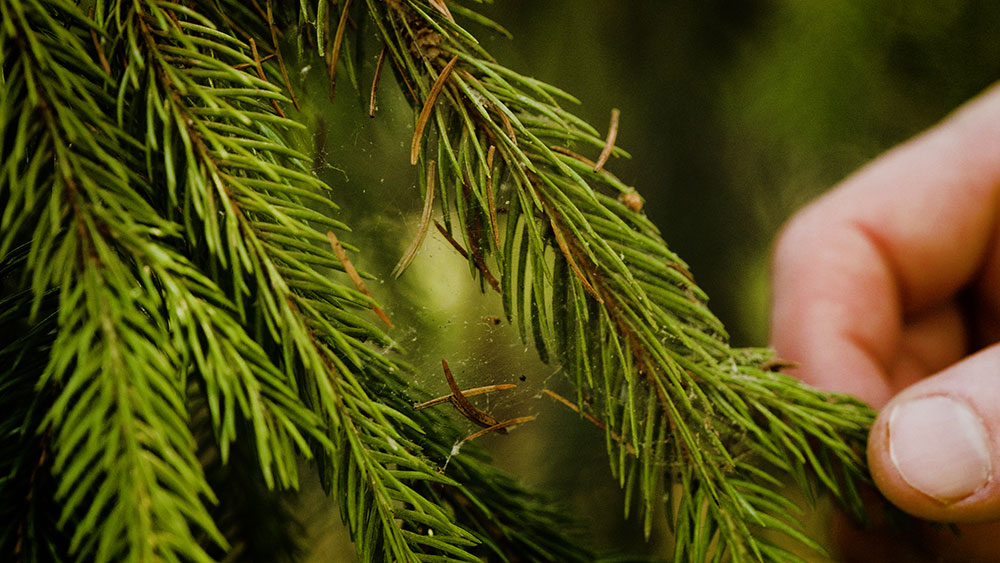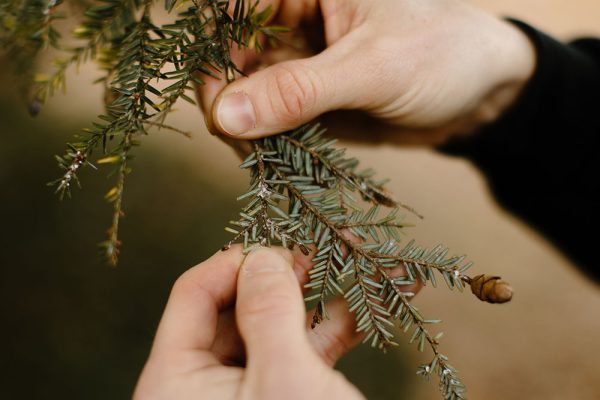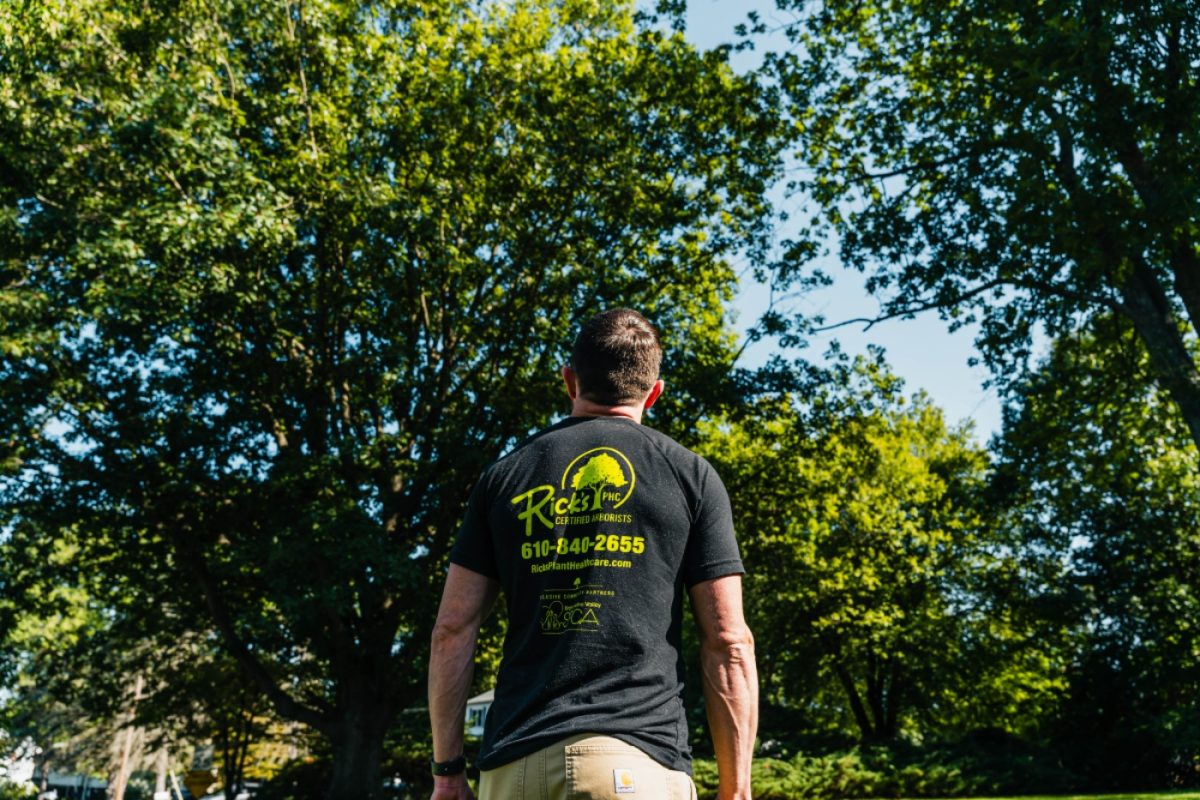Common Tree-Damaging Insects
Our arborists are trained to identify early signs of insect damage and implement appropriate treatment strategies. These are some of the most common culprits we see on local properties:
Tree Insect Treatment: How to Safeguard Your Trees
Preventive care is the best defense. Here are a few proactive steps homeowners can take to ensure proper tree insect treatment:
Tap for more information
Water Them Regularly
Healthy trees begin with proper hydration. Drought-stressed trees are more vulnerable to insect attacks, especially during hot summer months. Deep, consistent watering supports strong root development and improves a tree’s ability to fight off pests naturally.
Keep an Eye on Them
Routine visual inspections can catch the early signs of an infestation before it becomes serious. Look for curled or discolored leaves, unusual spotting, holes in bark, or sticky residue on foliage. The sooner you detect issues, the easier they are to manage.
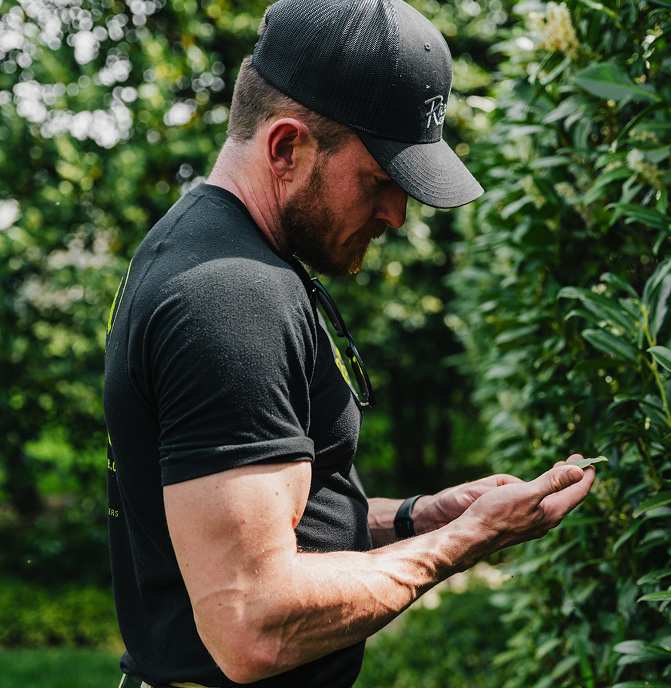
Signs of Insect Damage to Your Plants
You don’t need to be an expert to notice when something is wrong. Here are a few signs of insect trouble:
- Leaf discoloration or curling
- Unusual spotting or wilting
- Sticky residue or moldy patches
- Bark holes or fine sawdust (frass) near the trunk
- Dieback in upper branches
If you spot any of these signs, it’s time to take action.
Call Our Professionals for Tree Pest Control Near You
When insect populations are thriving or visible damage has already begun, our Certified Arborists step in with the tools, knowledge, and treatments needed to save your trees. We offer property-wide evaluations, targeted insect treatments, and seasonal management plans to keep your landscape healthy and pest-free.
